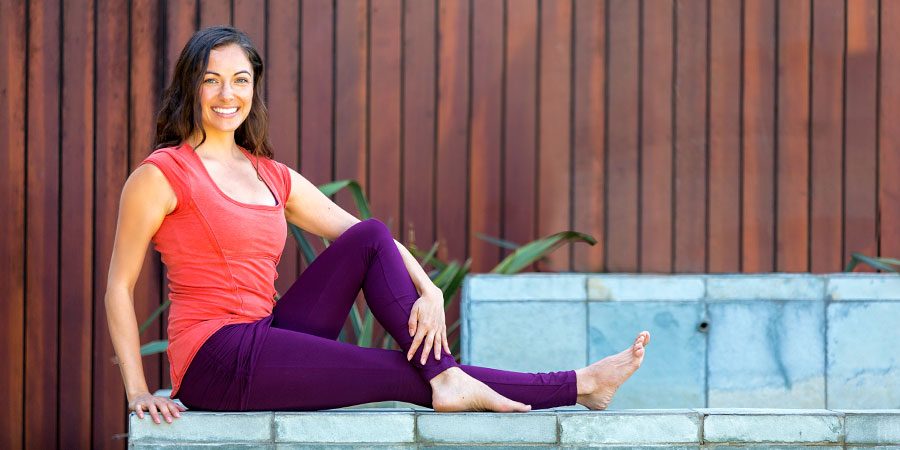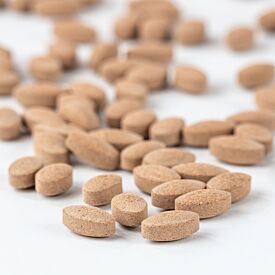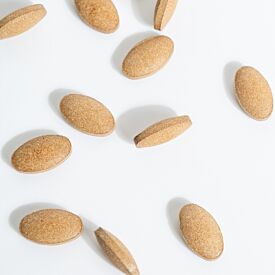Balance Pitta with Lifestyle Practices

Based on your current state of balance, we recommend that you follow a pitta-pacifying lifestyle. This is a way of balancing pitta with your habits, routines, and daily practices. In Ayurveda, adapting your lifestyle and being mindful of how you are living from day to day—even in relatively simple or subtle ways—can be an extremely effective way of encouraging a return to balance. Because every substance and experience we encounter has the potential to influence our health, there truly are an infinite number of ways to support your path toward balance. This resource will give you the foundational tools necessary to begin to adapt your lifestyle in favor of soothing pitta.
A Qualitative Perspective
As a starting place, it’s helpful to understand which types of influences will be most supportive. Pitta is soothed by experiences that are:
- Heavy (think grounding and nourishing).
- Slow (think tranquil and stress-free).
- Cool (think in terms of keeping cool both mentally and physically).
- Dry (think arid and non-stimulating).
- Dense (think wholesome, enriching, and sustaining).
- Stable (think steady and reliable).
These qualities help to balance pitta’s lightness, raw intensity, fierce ambition, fiery personality, desire to be in control, as well as its liquid, oily, and spreading nature. While incorporating pitta-pacifying qualities into your day-to-day experience may require a bit of effort and consideration initially, with practice, it can become quite intuitive.
Elements of a Pitta-Pacifying Lifestyle
In general, it’s important to slow down, ground, relax, and enjoy yourself. Making time for sweet, meaningful experiences will be potent medicine in and of itself. Pace yourself as you move through your day, and embrace relaxed effort in as many of your responsibilities and commitments as possible. Be willing to make mistakes and to laugh at yourself, while balancing your sense of responsibility with play. It is best to avoid intense heat or sunlight—especially during the middle of the day.
Below, you will find a few suggestions to get you started. Please try not to be an overachiever. Aggravated pitta can bring out the perfectionist in anyone, but you need not try to do everything. In fact, this is a perfect opportunity to embrace going slow, being intentional, and taking a more relaxed approach. What’s important here is to follow your inspiration, and to take on only what feels truly doable—which may be considerably less than your ideal. That’s a good thing, and it’s precisely the kind of adjustment that can help to soothe aggravated pitta.
Daily Routine
Ayurveda is big on daily routines. In fact, following an appropriate daily routine is one of the single most powerful Ayurvedic tools for improving overall health and well-being. This is true even when we are in near perfect health. And when imbalances are at play, a daily routine can be a game-changer.
While consistency is among the most important aspects of a daily routine, that doesn’t mean that you have to be rigidly attached to a specific schedule. Think of it more in terms of creating a sense of predictability that will serve to anchor your nervous system in a sense of normalcy and safety throughout each day. Your routine might be as simple as getting up and going to bed at the same times each day, or it might be slightly more elaborate. Either way, it should only include elements that you trust you can successfully engage with on a regular basis.
The best places to start when creating more consistency include sleep and wake times, meal times, and work schedules. You might also want to consider going to bed before 10 p.m., when the pitta mind tends to become very active and alert. You can probably be highly productive late at night, but regular and predictable rest is critically important to balancing pitta, and you will likely sleep better if you retire early.
Below are a few particularly pitta-pacifying elements to consider including as you craft your routine. For more support and ideas, please see our guide to creating a Pitta-Pacifying Daily Routine.

Yoga
As an important sister science to Ayurveda, the practice of yoga stands to benefit anyone. Remarkably, we can significantly amplify the value of practicing yoga by tailoring our practice to pacify a specific dosha. While there are any number of asanas (yoga postures) that are especially pitta-pacifying, it’s the overall approach to your practice that is going to have the biggest impact. As with other aspects of your life, bringing the qualities that calm pitta into your yoga practice can very effectively encourage a return to balance.
The most important thing is to have fun. Relax and enjoy yourself, without taking yourself—or your practice—too seriously. Bring a healthy amount of compassion and acceptance to your mat, and do your best to cultivate a sense of relaxed effort in both the body and the mind, while consciously lengthening each exhalation. Practice with a soft gaze while exploring creativity, fluidity, and freedom in your poses. Embrace variety by changing things up regularly. Avoid doing yoga in excessive heat, safe-guarding your capacity to maintain a calm, cool state of mind, and preventing your body from over-heating. Continually invite yourself into a respectful and engaged relationship with your body, being careful not to over-emphasize your thoughts, judgments, or your will. Instead, use your practice to invite a respectful integration between the body and the mind—acknowledging that they are, in fact, integrated aspects of a single whole.
For more support in tailoring your yoga practice, please see our resource on Pitta-Pacifying Yoga.
Pranayama
The practice of pranayama (yogic breathing exercises) is one of the most potent subtle therapies around. If you are new to pranayama, we recommend starting with Full Yogic Breath. Once that feels natural and comfortable, there are a couple of practices that are particularly pitta-pacifying. Sheetali (also known as Cooling Breath) helps to keep the body and mind cool and calm without compromising digestive strength. Nadi Shodhana (or Alternate Nostril Breathing) balances solar and lunar, masculine and feminine energies throughout the system, and is highly effective at pacifying pitta. Committing to just ten or fifteen minutes of pranayama each day can dramatically improve one’s state of mind and overall well-being.
Exercise
Even adapting how you exercise can help to pacify pitta. Excess pitta tends to increase heat, intensity, competitiveness, and ambition, as do many forms of exercise. Done carelessly, a well-meaning fitness routine can actually be highly aggravating to pitta. On the other hand, taking a few simple steps to adapt your approach to exercise can help to encourage an efficient return to balance. The two main things to be mindful of are heat and intensity. Obviously, our bodies warm up when we exercise. Working out during the cooler parts of the day will help to ensure that your body doesn’t overheat. Ideally, plan your workouts during the kapha times of day (6–10 a.m. and p.m.) when there is an increased buffer in the atmosphere against the most pitta-aggravating elements of exercise. In any case, avoid exercising between 10 a.m. and 2 p.m., when the sun is at its zenith and pitta is the predominant force in the atmosphere.
In general, exercise at about 50 percent of your capacity—taking care not to overdo it, but challenging yourself enough that you are not bored. Relax when you might normally tend to strain. And see if you can invite your mind to be in a more laid-back space throughout your workout. Exercising outdoors can also help to soften pitta’s sharpness. You may want to change things up regularly, consciously engaging with the newness of each workout. For more on this topic, please see our resource on The Pitta-Pacifying Approach to Fitness.
Awareness Is Everything
In Ayurveda, especially when we’re talking about lifestyle, just about anything can be medicine (or poison, for that matter). At the most fundamental level, following a pitta-pacifying lifestyle is about inviting more pitta-pacifying qualities into your day-to-day experience, whether through specific, focused practices, the overall attitude you cultivate towards life, or both. This is why fostering awareness is so critically important. With a little effort, we can become quite astute at knowing which types of experiences are going to soothe our systems and support our health, and which might tend to sabotage our well-being. Choosing to follow a pitta-pacifying lifestyle is a simple matter of practicing more discernment. It is an invitation to intentionally fill our days with supportive types of experiences, while limiting those that will be less so. As our understanding deepens, and as we begin to understand how, the very way we move through life becomes a powerful opportunity for healing.










